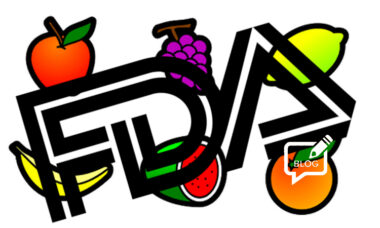 With just a week remaining until it’s supposed to have ruled on all 6m-plus premarket tobacco product applications (PMTAs) it had received by this time last year, the US Food and Drug Administration (FDA) is seriously up against it to deliver. Whatever it eventually does deliver should shape the whole future of the US e-cigarette market.
With just a week remaining until it’s supposed to have ruled on all 6m-plus premarket tobacco product applications (PMTAs) it had received by this time last year, the US Food and Drug Administration (FDA) is seriously up against it to deliver. Whatever it eventually does deliver should shape the whole future of the US e-cigarette market.
And it’s pretty clear that whatever it does, the agency can’t win.
Get through the paperwork mountain by rejecting most of the submissions still in the game up to now and it will take heavy criticism – and not just from the devastated e-cig industry.
Go the other way and wave the majority through and it will face the wrath of countless high-profile anti-vapers, many of them in positions of democratic power. (See the recent call by more than half the state attorneys general in the country for the FDA to ban all non-tobacco flavours in e-cigs; more on that idea below.)
Fail to get through the workload and it will take flak from all sides.
It can’t, presumably, reduce the pile much further by refusing to consider submissions which simply “do not meet the filing requirements”. It managed to get rid of around 4.5m applications from one manufacturer that way, which must have been some relief to overworked FDA staff.
Those pesky ‘kid-friendly’ products
Another 55,000 hit the wastebin last week on the grounds that they “lacked sufficient evidence that they have a benefit to adult smokers sufficient to overcome the public health threat posed by the well-documented, alarming levels of youth use of such products”.
Which still leaves rather a lot to sort through. And a big question hanging in the air over what criteria the agency uses to determine whether any given vaping product “meets the statutory standard of ‘appropriate for the protection of the public health’.”
In the case of those doomed 55,000 the real issue, whatever the official words may have been, was clearly flavours.
It’s hard to argue against the view that packaging and advertising e-cigarette products in a “kid-friendly” way is irresponsible. But are flavours in themselves innately kid-friendly? And would clearing the market of flavoured e-cigs really be “appropriate for the protection of the public health”?
There are solid reasons to doubt it.
Take this piece of research, carried out by medical researchers at George Washington and Stanford universities and newly published by Oxford University, on “Reactions to sales restrictions on flavored vape products or all vape products among young adults in the US”.
Its conclusion could hardly be more mildly worded: “While lower-risk users may be more positively impacted by such policies, other young adult user subgroups may not experience benefit.”
The deadly switch
Cutting to the meat of the survey, however, we find: “If vape product sales were restricted to tobacco flavors, 39.1% of users reported being likely to continue using e-cigarettes but 33.2% were likely to switch to cigarettes.”
And further: “If vape product sales were entirely restricted, e-cigarette users were equally likely to switch to cigarettes versus not (~40%).”
In other words, if vape flavours other than tobacco are taken off the market – as so many well-intentioned politicians, attorneys general and others demand – a third of young vapers would switch to smoking. Which, the scientific consensus agrees, is a much deadlier habit.
If e-cigs are banned entirely, the proportion making that deadly switch would be even higher.
OK, this is all based on a survey of what 2,159 young adults say they would do, not actual observed behaviour. But that’s surely a much better guide to likely outcomes than the gut feelings of a noisy caucus of non-experts.
As the actual experts say: “This research should be considered in future tobacco control initiatives.” Too late, probably – maybe unfortunately – to guide the overstretched FDA in its current, soon-to-be-concluded deliberations.
– Aidan Semmens ECigIntelligence staff






